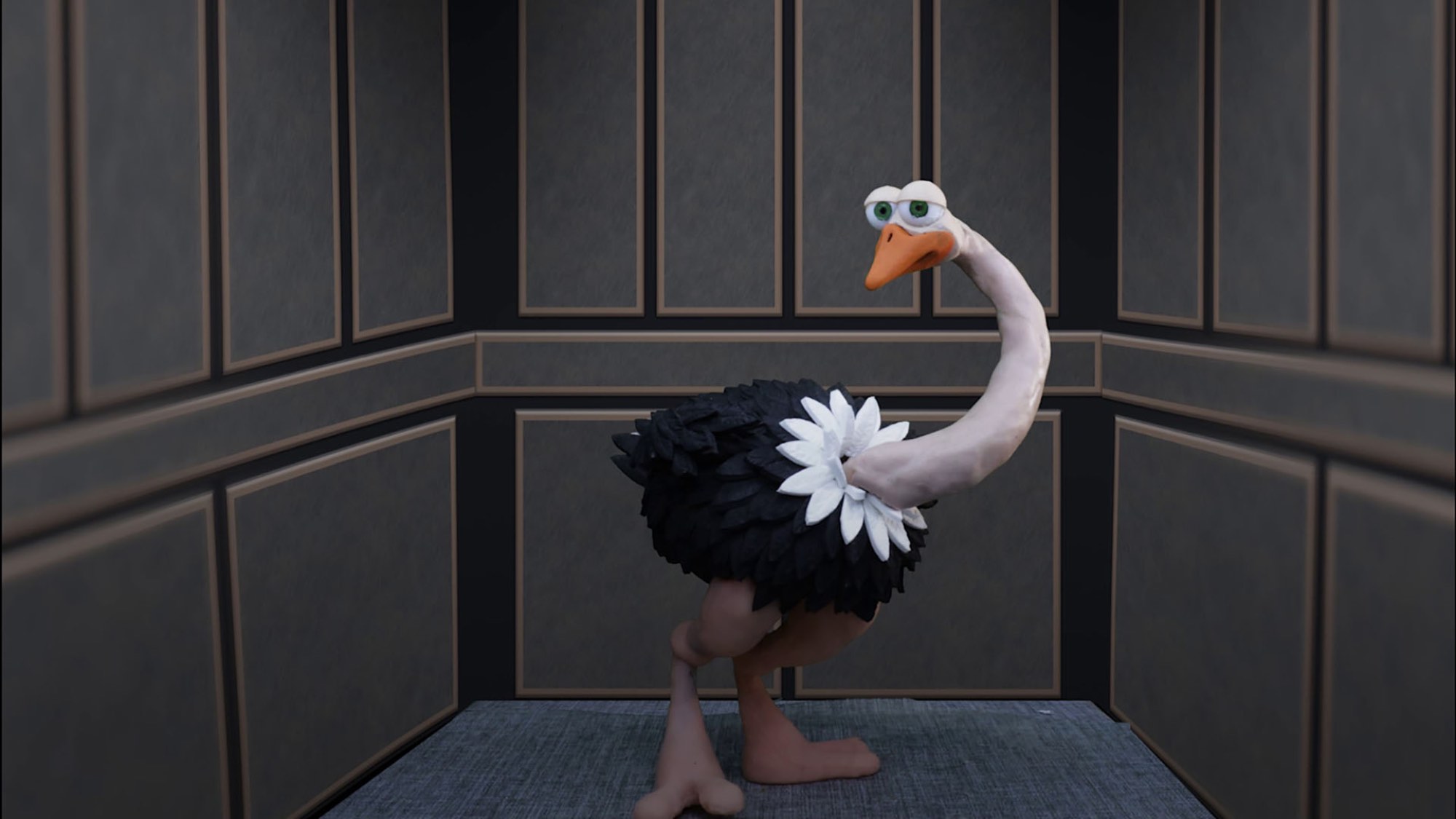
Animator Lachlan Pendragon combines the whimsical world of stop motion animation with the mind-boggling psychological drama of Charlie Kaufman in his Oscar nominated meta-comedy An Ostrich Told Me the World Is Fake and I Think I Believe It, which follows a quiet office worker as he goes about his day before being confronted by a mysterious ostrich who shows him that his reality is not what it seems. The meta deconstructions of Pendragon’s short are a joy to behold as his central character’s slowly crumbling reality begins to manifest through his colleagues’ malfunctioning faces and the seams of his seemingly mundane office environment revealing themselves to being a part of a constructed production set. DN caught up with Pendragon in the run up to the Oscars to learn more about his journey into stop motion animation, the formation of his whimsical yet smartly-constructed character models, and his vision for the future.
When and how did you first become interested in animation as a practice and potential career?
I was very interested in live action filmmaking in high school. I made a stop motion film back then and also my fair share of flip-book animations in the corners of textbooks but it wasn’t until studying animation at Griffith Film School that I realised my true passion for it.
Where did the idea for a meta-comedy about an office worker’s crumbling reality come from?
I knew I wanted to play with the making-of or behind the scenes of stop motion as much as possible. Whenever I see a time-lapse of a stop-mo animator it always looks spectacular and chaotic. I wanted to pair this with something mundane like an office where the character feels like their time is wasting away as we see time wizz past quite literally on screen as a time-lapse of the animation process.

Who would you say are your artistic influences? Watching I was reminded of everything from Aardman to Charlie Kaufman.
Yes, I love Aardman films and I’m definitely inspired by those in my own work as well as Fantastic Mr. Fox and Coraline and all those lovely films.
It was also important that you could still connect with the characters despite all the meta-gags and potential distractions.
I read that project was partially funded by your PhD at Griffith University.
The budget was somewhere around $6000 which was a mix of PhD and self-funding.
How did your research degree overlap with the short? Were you given resources by the university and guidance from your tutors, if so, how did they inform the film?
The short film is my research output and is accompanied by a written thesis to explain its significance. However, I’m still in the final stages of completing all that and getting my degree. I had two university supervisors who worked on the project giving regular feedback and suggestions that helped elevate the ideas into interesting places. For example, the long title came from a suggestion from a supervisor.


I also read that you spent a portion of last year teaching animation, are there any lessons or words of advice you use in the classroom that you would say you adhered to in making this short?
It’s different for everyone, I think for me I found it valuable to explore as many disciplines as I could early on without thinking too much about what use they’d be. Anything from 3D modelling to post production to life drawing. Then later on in undergrad when I figured out what I wanted to do I had a wide variety of skills to draw on.
How did you design your characters? There’s a comedic element to how they look with their exaggerated features but there’s also the intentional artificial element.
They have an assembled look to them where you can visually deconstruct the materials like you would a toy that beckons to be played with. But it was also important that you could still connect with the characters despite all the meta-gags and potential distractions so the exaggerated proportions helps in that way I think.
You mentioned studying multiple disciplines prior to working in stop motion animation, how did those artistic forms influence your creative approach?
I think I was just lucky that most of the skills or tools I learned were still very applicable to stop motion when I finally realised that’s what I wanted to do. For instance, I could use what I learned in CGI character modelling and apply it to 3D-printing miniature stuff for stop motion.

How long were you working on the film from the initial stages of developing the script through to the final edit?
The entire process took three years which is the length of the research degree. This includes writing the script, drawing up the animatic, building the sets and puppets, writing the accompanying thesis, and the all important animating process which took about ten months.
I found it valuable to explore as many disciplines as I could early on without thinking too much about what use they’d be.
You wrote, directed, animated and created the puppets for this short, do you see yourself continuing to have that much involvement in the creation of any future projects?
I enjoy having a say in the different areas of production and with small projects, there’s something really satisfying about doing it all yourself and having that godlike control over everything. However, I’m looking forward to working in a larger team and collaborating more and learning from other people. I feel like I won’t wear as many hats moving forward.
Is there anything you can tell us about what you’ll be working on next?
I’m still figuring all of that out. The dream is it be involved in a feature animation. I love films like The Pirates! In an Adventure with Scientists and Isle of Dogs that have a great sense of humour and visual style.



[…] short was made for a budget of $6,000 and was part of his advanced degree requirements. In a Directors Notes interview, he said, “The short film is my research output and is accompanied by a written thesis to explain […]